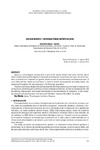Please use this identifier to cite or link to this item:
https://accedacris.ulpgc.es/handle/10553/55717
| DC Field | Value | Language |
|---|---|---|
| dc.contributor.author | Sarmiento Ramos, Lourdes | en_US |
| dc.date.accessioned | 2019-06-10T11:34:39Z | - |
| dc.date.available | 2019-06-10T11:34:39Z | - |
| dc.date.issued | 2016 | en_US |
| dc.identifier.issn | 0214-9877 | en_US |
| dc.identifier.uri | https://accedacris.ulpgc.es/handle/10553/55717 | - |
| dc.description.abstract | El envejecimiento es un proceso fisiológico que forma parte del ciclo vital del ser humano: pero el ritmo al que se produce y el grado de afectación funcional y estructural sobre cada uno de los aparatos y sistemas, es variable y está en función de factores genéticos, medioambientales y comportamentales. Y es sobre estos últimos, sobre los que se debe incidir para fomentar la adquisición de hábitos saludables, como, la realización de Actividad Físico Deportiva, a lo largo de la vida y especialmente en la población más mayor. Existen numerosos estudios que demuestran que practicar un mínimo de ejercicio físico actúa en la prevención y control de enfermedades crónicas y tumores, disminuye el riesgo de padecer osteoporosis y en definitiva, contribuye al mantenimiento de la autononomia, incrementa el bienestar físico y psicológico y por tanto mejora la calidad de vida de los mas mayores. | en_US |
| dc.description.abstract | Aging is a physiological process that is part of the human being’s vital cycle: but the rate at which it takes place and the degree of functional and structural impairment over each one of the sys-tems is variable and it depends on genetic factors as well as environmental and behavioral ones. It is on these last two where we must focus in order to foment the acquisition of healthy habits, like exercising throughout life and especially in the third age population. There are numerous studies that demonstrate the fact that practicing a minimum of exercise has an impact on preventing and controlling chronic diseases and tumors, as well as decreasing the risk of suffering osteoporosis, and overall contributing to the maintenance of autonomy. It also increa- ses physical and psychological well-being and therefore improves the elders’ life quality. | en_US |
| dc.language | spa | en_US |
| dc.relation.ispartof | INFAD | en_US |
| dc.source | INFAD [ISSN 0214-9877], v. 1 (2), p. 135-142, (2016) | en_US |
| dc.subject | 241106 Fisiología del ejercicio | en_US |
| dc.subject.other | Envejecimiento | en_US |
| dc.subject.other | Funciones fisiológicas | en_US |
| dc.subject.other | Ejercicio | en_US |
| dc.title | Envejecimiento y actividad físico deportiva (AFD) | en_US |
| dc.type | info:eu-repo/semantics/article | en_US |
| dc.type | Article | en_US |
| dc.identifier.doi | 10.17060/ijodaep.2016.n2.v1.579 | en_US |
| dc.description.lastpage | 142 | en_US |
| dc.identifier.issue | 2 | - |
| dc.description.firstpage | 135 | en_US |
| dc.relation.volume | 1 | en_US |
| dc.investigacion | Ciencias de la Salud | en_US |
| dc.type2 | Artículo | en_US |
| dc.description.numberofpages | 8 | en_US |
| dc.utils.revision | Sí | en_US |
| dc.identifier.ulpgc | Sí | en_US |
| dc.description.dialnetimpact | 0,0 | |
| dc.description.dialnetq | Q4 | |
| dc.description.dialnetd | D9 | |
| dc.description.erihplus | ERIH PLUS | |
| item.fulltext | Con texto completo | - |
| item.grantfulltext | open | - |
| crisitem.author.dept | Departamento de Educación Física | - |
| crisitem.author.fullName | Sarmiento Ramos, Lourdes | - |
| Appears in Collections: | Artículos | |
Page view(s)
87
checked on Oct 14, 2023
Download(s)
118
checked on Oct 14, 2023
Google ScholarTM
Check
Altmetric
Share
Export metadata
Items in accedaCRIS are protected by copyright, with all rights reserved, unless otherwise indicated.
